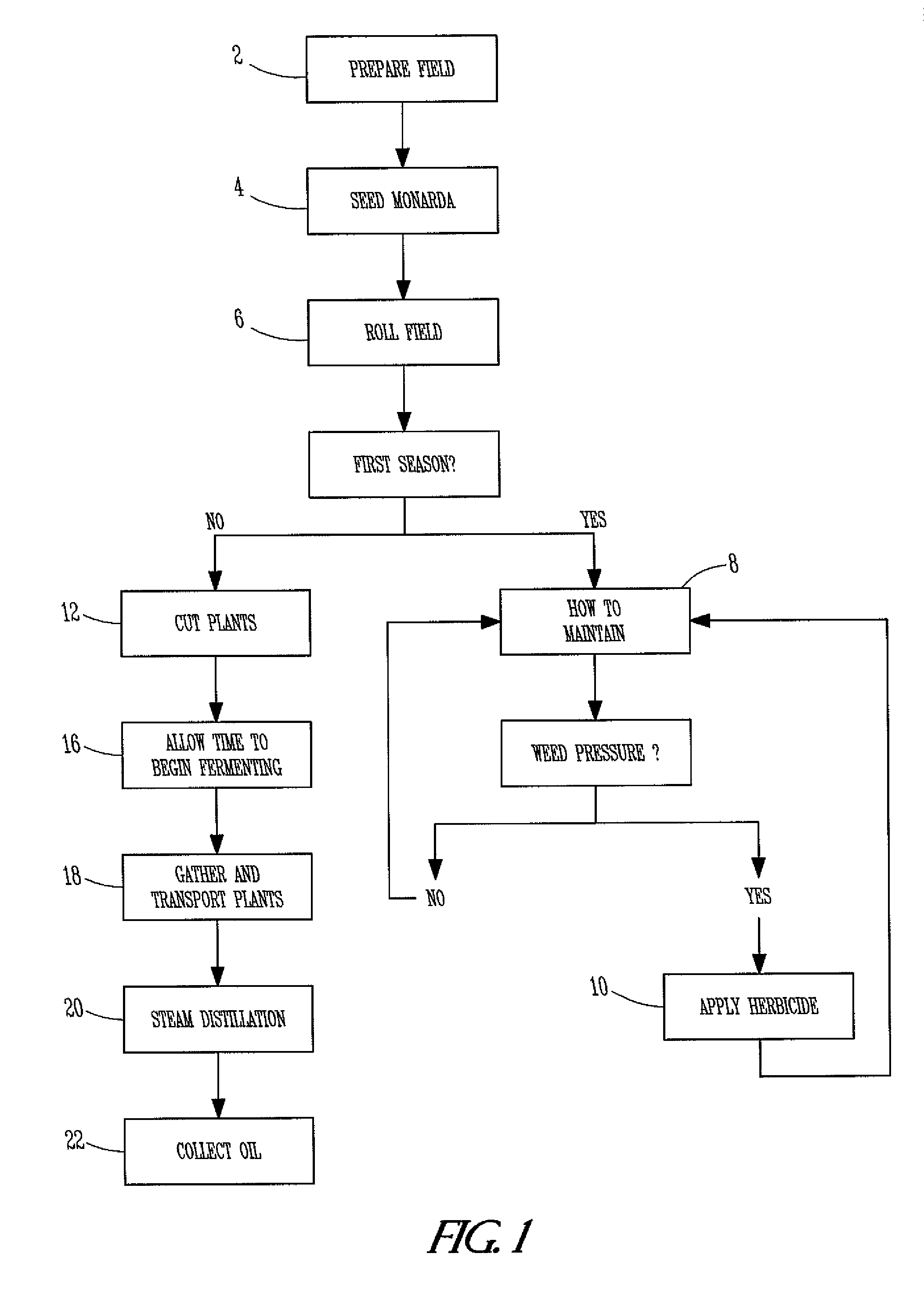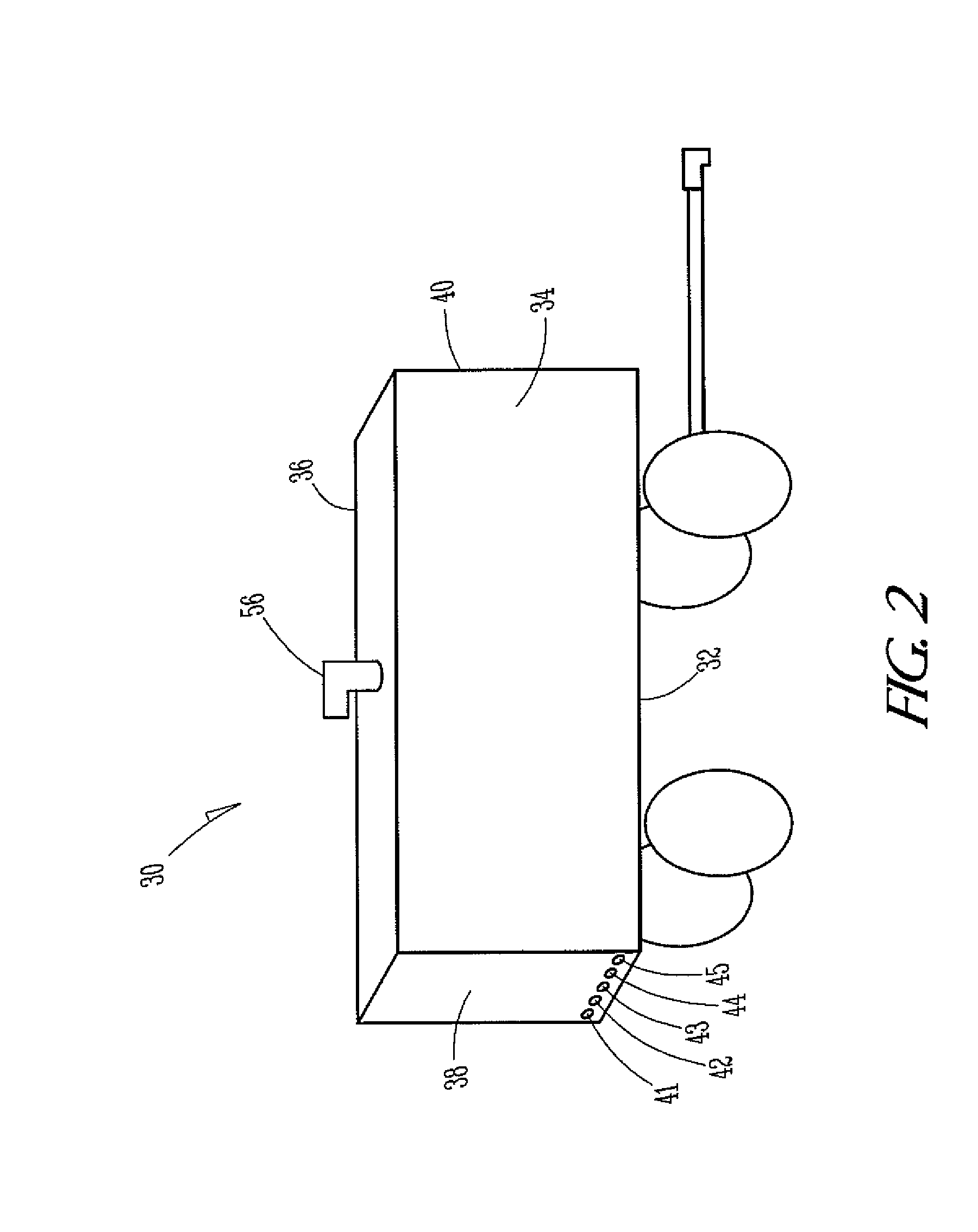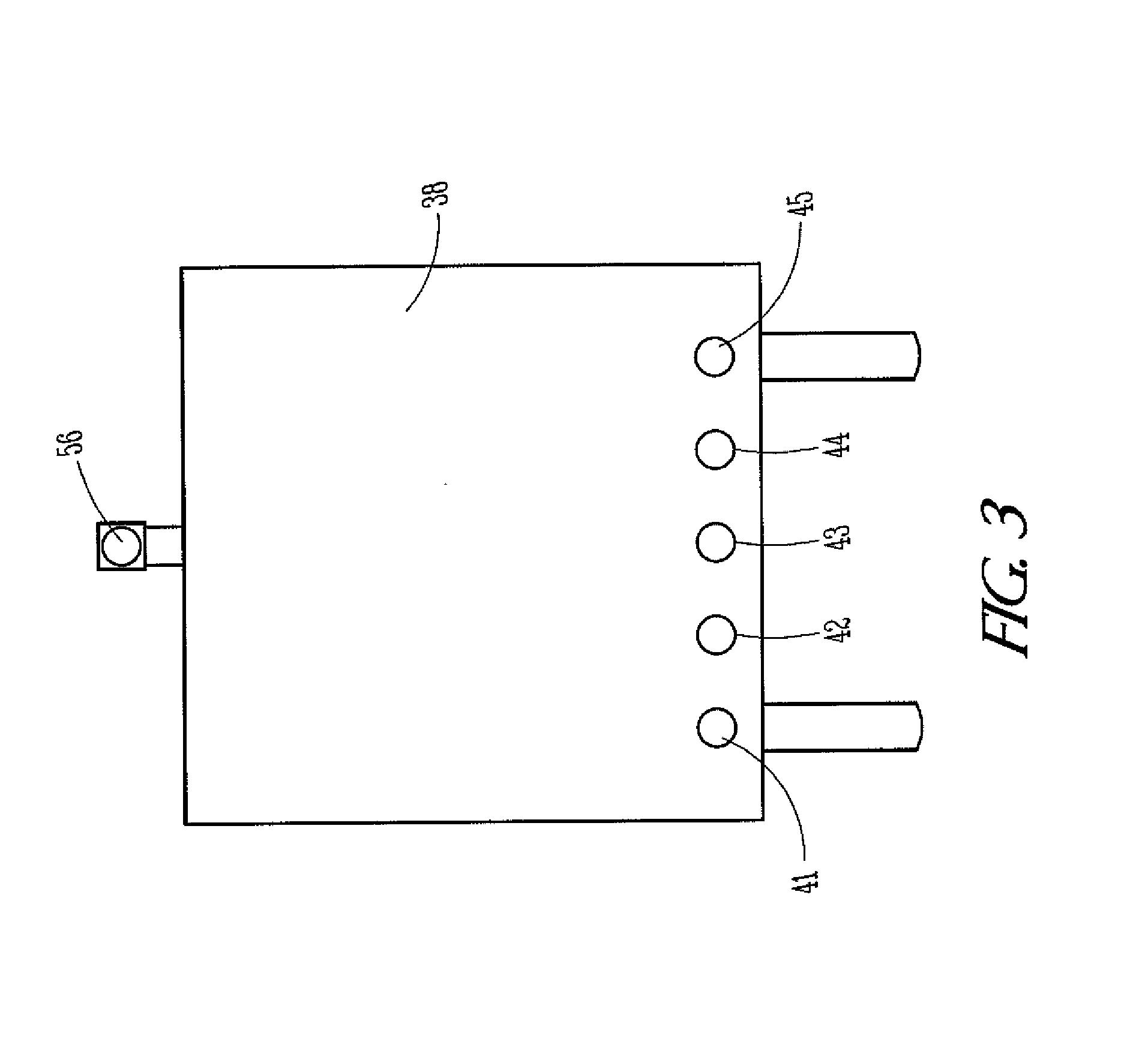Method for Cultivation of Monarda Fistulosa for Production of Thymoquinone
a cultivation method and technology of monarda fistulosa, applied in the direction of seed and root treatment, group 3/13 element organic compounds, group 5/15 element organic compounds, etc., can solve the problems of reducing the yield of oil, reducing the quality of oil, and not providing the better means for cultivating and harvesting plants and the desired essential oils, so as to increase the yield of monarda fistulosa oil, reduce herbicide use and fuel use, and increase the yield of monard
- Summary
- Abstract
- Description
- Claims
- Application Information
AI Technical Summary
Benefits of technology
Problems solved by technology
Method used
Image
Examples
Embodiment Construction
[0039]The present invention comprises planting seed of Monarda fistulosa or any of the species listed in Table 1 in a field at a rate between about 2.5 lbs per acre and about 5 lbs per acre and more preferably between about 3.5 and 4.5 lbs per acre. Alternatively, plants 14 may be plug planted at a rate between about 45,000 and about 60,000 per acre. The field 12 should be mowed regularly the first year without harvesting the plant or its heads / blooms, and then harvesting it in years thereafter. Harvest may include stems (generally the section above the ground level), along with leaves and heads, or may be more limited to harvesting just heads without stems and leaves. The lifetime of plants 14 for a single planting is typically 5-7 harvests, but may be longer or shorter depending on soil conditions, climate and husbandry practices. The equipment used to condition the field, plant the seed (where seeding is employed rather than plug planting), or, alternatively, plant the plugs, mow...
PUM
| Property | Measurement | Unit |
|---|---|---|
| height | aaaaa | aaaaa |
| height | aaaaa | aaaaa |
| length | aaaaa | aaaaa |
Abstract
Description
Claims
Application Information
 Login to View More
Login to View More - R&D
- Intellectual Property
- Life Sciences
- Materials
- Tech Scout
- Unparalleled Data Quality
- Higher Quality Content
- 60% Fewer Hallucinations
Browse by: Latest US Patents, China's latest patents, Technical Efficacy Thesaurus, Application Domain, Technology Topic, Popular Technical Reports.
© 2025 PatSnap. All rights reserved.Legal|Privacy policy|Modern Slavery Act Transparency Statement|Sitemap|About US| Contact US: help@patsnap.com



